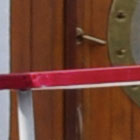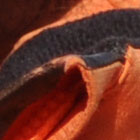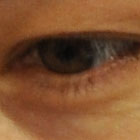Nikon D5000
-
-
Written by Gordon Laing
Nikon D5000 gallery
|
Landscape: 5.12MB, Program, 1/500, f11, 200 ISO, 18-55mm VR at 18mm (equivalent to 27mm)
Landscape: 6.41MB, Program, 1/250, f8, 100 ISO, 18-55mm VR at 18mm (equivalent to 27mm)
Landscape: 5.02MB, Program, 1/250, f8, 200 ISO, 18-55mm VR at 55mm (equivalent to 83mm)
Portrait: 4.44MB, Aperture Priority, 1/2000, f5.6, ISO 200, 18-55mm VR at 55mm (equiv to 83mm)
Macro: 5.46MB, Program, 1/20, f5.6, 400 ISO, 18-55mm VR at 55mm (equivalent to 83mm)
Indoor: 5.58MB, Program, 1/50, f3.5, 400 ISO, 18-55mm VR at 18mm (equivalent to 27mm)
Indoor: 5.31MB, Program, 1/10, f3.5, 800 ISO, 18-55mm VR at 18mm (equivalent to 27mm)
Indoor: 5.22MB, Program, 1/60, f4, 1600 ISO, 18-55mm VR at 18mm (equivalent to 27mm)
| ||||||||||||||||||||||||||||||||||||||||||||||||||||||||||||||||||||||||||||||||||||||||||||||||||||||||||||||||||||||||||||||||||||||||||||||||||||||
The following images were taken with a final-production Nikon D5000 using the DX 18-55mm VR kit lens. The D5000 was set to Large Fine JPEG mode with Auto White Balance and the default Standard Picture Control, Normal High ISO NR and Active D-Lighting set to the default Auto for all but the last two images where it was disabled.
The individual exposure mode, file sizes, shutter speeds, aperture, ISO and lens focal length are listed for each image.
The crops are taken from the original files, reproduced at 100% and saved in Adobe Photoshop CS4 as JPEGs with the Very High quality preset, while the resized images were made in Photoshop CS4 and saved with the default High quality preset. The three crops are typically taken from far left, central and far right portions of each image.
Note: you may wish to open a number of galleries for direct comparison of detail and noise: Canon EOS 500D / T1i sample images, Nikon D60 sample images and Nikon D90 sample images; our Olympus E-620 Gallery is coming soon.



































